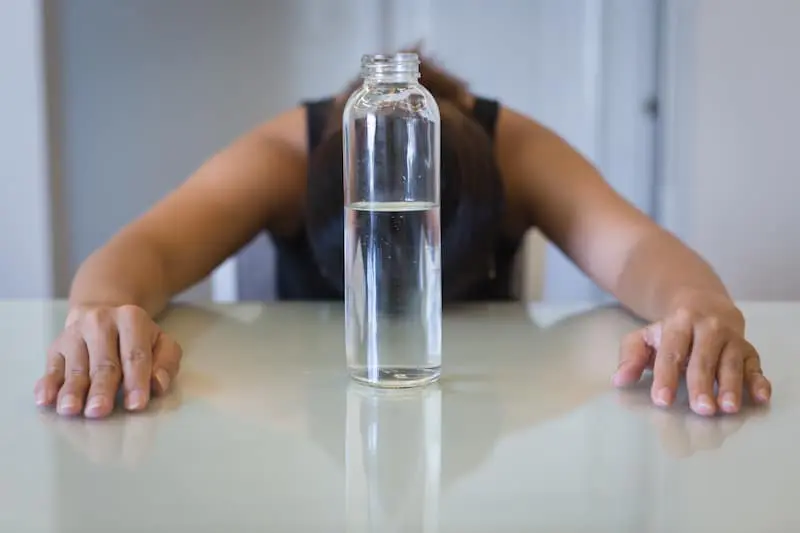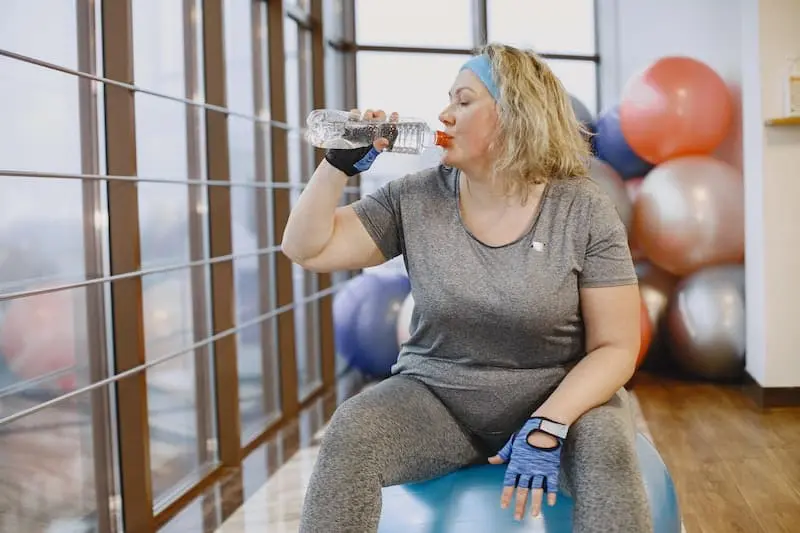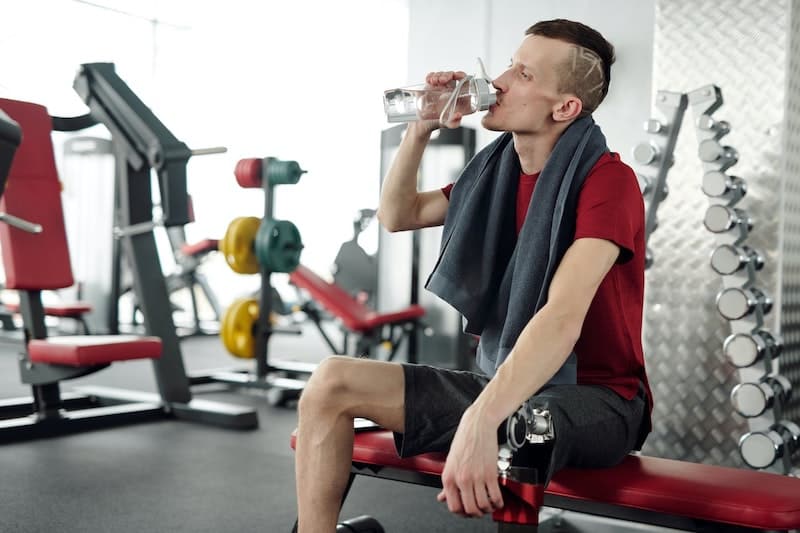
The best online fitness resource you'll ever need. We filter out the BS to ensure you meet your health and fitness goals!

The best online fitness resource you'll ever need. We filter out the BS to ensure you meet your health and fitness goals!

Water fasting and working out has recently picked up in popularity and whilst some people have had success on these short water fasts whilst continuing their activity, others have raised concerns about its viability and safety implications.
In short, many people do not recommend undertaking a water fast and working out at the same time due to the fact that a water fast requires you to abstain from eating for up to 3 days.
However, if you do still wish to work out during your water fast, it’s entirely possible to do so with some modifications to your programming.
Water fasting is pretty self-explanatory. During a water fast you are restricted to only drinking water during the entirety of your fast.
There is no set length of time that one has to water fast for. However, health professionals only advise a person to go without food for a maximum of 3 days due to the small amount of data available for a prolonged water fast.
WARNING: Any further increase of a water fast should only be conducted under the supervision of a medical professional.
There are also many reasons why a person might want to conduct a water fast.
If there are health risks related to the persons weight, such as living with class 3 obesity (a BMI of 40 and over) or being overweight with a BMI of 35 and above but living with obesity related symptoms one might consider it.

Alternatively, religious or spiritual beliefs may lead a person to attempting a prolonged water fast.
You might like: Our Water Fasting Weight Loss Calculator for determining the approximate weight loss you may experience for a given water fast.
The benefits of fasting have been well documented.
Whilst the benefits above are also linked with the average calorie deficit and drop in body fat, it’s one tool out of many that one can turn to in a pinch.
And more often than not requires less planning ahead and less thought throughout the day compared to a regular fad diet.
So, what is the benefit of fasting for longer? And only drinking water?

Water, and staying hydrated in general, is one of the most important things for the human body to stay functioning throughout the day.
Where you can live for long stretches without eating food, you simply can not stop drinking water.
Remaining hydrated helps prevent medical conditions such as kidney-stones, urinary tract infections and hypertension.
It helps the body to absorb nutrients from your food. It helps flush waste out of the body and also helps to regulate your normal temperature.
When comparing an extended water fast with a standard time-restricted intermittent fast, the benefits generally overlap.
There’s no observable benefit other than your average energy intake across those days is increased. During a typical time-restricted fast you would be introducing calories into the system, whereas on a water fast you are only introducing water.
You would still benefit from the increased autophagy, reduced inflammation and insulin sensitivity. But you would lose more body fat over time. And generally, lose more weight.

This is where things get a bit riskier.
A water fast, when not participating in increased activity, is generally safe when observed across the maximum 3 day period.
However, when introducing extended periods of activity and exercise, you introduce more risk into the equation.
People who are not used to fasting tend to find the first few days a bit tricky. When people switch from a regular eating schedule into a time-restricted eating window they tend to experience undesirable side-effects such as dizziness, brain fog and sometimes fainting due to the sudden reduction in blood sugar.
These tend to reduce over time, however they are helped by the fact that they have a daily eating window where food can be re-introduced.
Because of this, athletes have the benefit of planning their activity around their eating window. Knowing that food is available to them they often break their fast then go to the gym to make use of the added energy.
When it comes to water fasting and exercise this option is not available. However there is some advice to take into consideration.
Firstly, it’s important to note that there is no one-size-fits-all consideration when it comes to exercise. Everyone’s body is different. We all operate differently.
We have different genetics. And we all make use of the energy we have stored differently too. So firstly, do not take this as gospel. This is not medical advice. And secondly:
You are at a higher risk of injury during a water fast.
Read that again if you need to.
Exercise places a lot of demands on the body. And food aids in recovery as much as simply resting does.
Food also provides the energy we need to get through a high intense period of activity.
Carbs and fats provide not only the energy for the activity, but replaces what we used afterwards. Protein, something which the body can not synthesis itself, helps rebuild damaged muscles and cells.
When partaking in any strength or hypertrophy program you are damaging the muscles, among other things, and they take about 48 to 72 hours to repair.
So, it’s worth remembering that you may not have the available energy to operate at your usual intensity safely when water fasting and working out.
Therefore, you have two options available to you when water fasting and working out:
Lower the intensity. Or. Take the week off.
A water fast is only 3 days long. This means that you have the option of changing your program to suit this short period without any risk in a reduction in your ‘gainz’.
If you currently run a heavy powerlifting program and you’re hitting one rep maxes every other week, perhaps consider a deload on this week. Go at half intensity. Half the weight or half the reps.
Use this week for rehab. Or better yet, take the week off. Recovery is just as important for development as the work you do in the gym.
You do not have the same amount of energy available to you as you would with a regular feeding schedule. And whilst fat is still an energy source, it’s not as efficient as carbohydrates. So you’re not going to be able to manage the same intensity as you would normally.
If you are a cardio-freak and tend to go on long runs or love track and field, you would be best to also reduce your running time, speed and intensity. This would be a great week for slow jogs rather than aiming to beat your personal best.
One of the benefits, however, of water fasting and working out is that you should be upping your fluid intake anyway.

So risk of dehydration should be lower.
However, it’s important to remember that we also get a lot of our fluids from our foods as well as our drinks. So there may be a risk that you’re not drinking enough.
Ensure your fluid intakes are increased more than you would normally to better ensure you do not risk dehydration.
There are a multitude of intermittent fasting trends that one can choose from to chase their weight loss and health promotion goals.
Some simply rely on shrinking your daily eating windows, some restrict you to only having one meal a day and others push the envelope out further by stopping you eating for several days at a time.
Water fasting, on the other hand, is only meant to be a very temporary diet.
If you intend to water fast for longer than 3 days, unless you have medical supervision you may be better off considering one of the other intermittent fasting methods such as 16/8 or OMAD (One Meal a Day) so that you have some food coming in to fuel your workouts.
If you do insist on water fasting and working out, consider drastically lowering the intensity of your usual workouts. Or take the opportunity for a deload or rest week.
If you’re on this website it’s no doubt that your are a bit of a fitness addict like the rest of us. So we sympathise with how a deload or week off might seem like the worst idea ever.
But just remember that time off is as beneficial as your time in the gym. And water fasting comes with even more risk than a regular fast.
So it’s best to practice these things safely and come out on top, instead of adding even more risk of injury and being forced to take several months off.